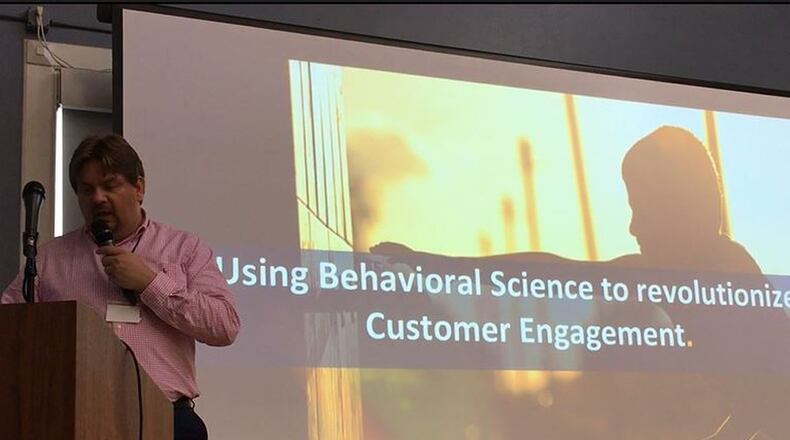It’s not money savings, environmental good or being a good citizens that motivate utility customers to conserve energy, a recent study in California determined. Those three motivations together had a “zero impact on consumption,” the study found.
By comparison, another motivation — doing as well as the neighbors — led to a 6 percent drop in use, he said.
Advizzo was one of six companies that participated in Pipeline H2O, a Hamilton-based program that mentors and offers a variety of other assistance to companies involved in the field of technology involved with water. That also takes in sewage.
Rahul Bawa, chairman of the board for Pipeline H2O, whose goal is to commercialize leading water-tech products — with the help of the U.S. Environmental Protection Agency, as well as area universities, consumer-products companies and utilities — said the Class of 2018 was stronger than the inaugural class last year, and will “change the world.”
People spend about nine minutes a year thinking about water and electricity, Lancha said.
“In comparison, you spend about 20 hours a month on Facebook,” he said.
The company is based in England but led by Frenchmen. It creates reports for customers that can provide personal insights to their usage, making use of behavioral sciences.
“We’re part of a unique landscape in customer engagement,” Lancha said. The company also works on motivation for increased recycling tailoring reports to utilities and their customers. He noted Americans spend about 15 percent of their income yearly on water and electricity.
Advizzo plans to open a Cincinnati-area office early this summer, and start working for its first paying client in July. It hopes to be working with more than 15 million households, saving up to 3 percent of water and energy costs, while cutting utilities’ costs to serve customers by more than 10 percent per year, he said.
About the Author
